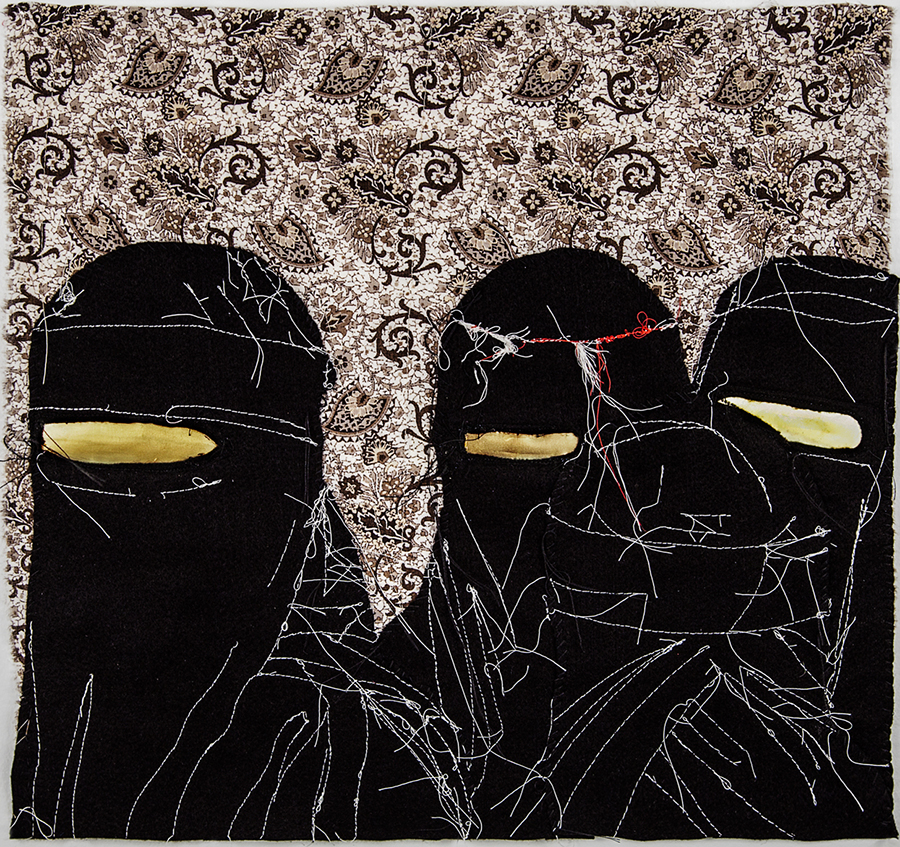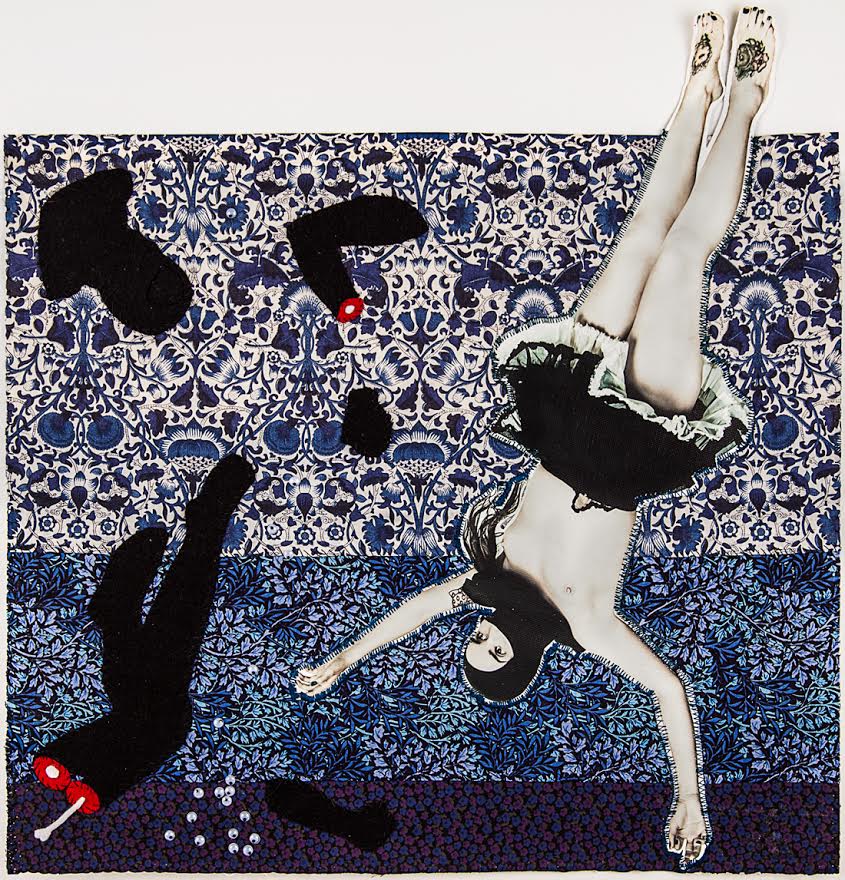STRIKE
Strike as the product of social conflict in search of new realities
Medium: Fabric and mixed media, 14 pieces
Year: 2014
Exhibited:
▷ Fondation Art Contemporain Salomon // ‘Un Regard Sur Le Monde’ / Annecy, France - January 26 to March 31, 2017
▷ Untitled Art Fair // BravinLee Programs / Miami, FL • December 4 - 8, 2013

Piece title: Catatumbo
Global Neoliberalism has pushed conditions of no hope and no future transforming rural economies with corporate capital, leaving --predominantly agrarian countries-- in a state of precarization. The alteration of the ‘ecosystem’ of rural capitalist relations has provoked havoc and a new unsustainable model at the mercy of the global economic powers were the peasantry has been disempowered and in a state of struggle for food sovereignty.
Colombia’s strike of 2013 was one that officially didn’t exist according to ‘big brother’; the official statements were always in denial of reality.
Class struggle of the proletarian peasant population demanding better conditions that will make feasible self sustainment from working the land lead to Colombia’s general strike in 2016 and 2013.
The strikes saw the rise of the people’s protest power in a massive scale amidst a climate of protest criminalization and during Havana’s peace negotiations. The framework of this protest occurs during the world’s longest civil war of more than 50 years, which initiated in the same political place as the currents strike rests. As the people’s rural resistance movement, fighting for basic rights and land
sovereignty.
Neo-Colonialism in the form of foreign intervention and free trade agreements have left Colombia’s rural population in conditions of extreme poverty, displacement and as victims of violence. The state opened its door to the import of basic agrarian products, which are most of the rural population’s source of sustenance, forcing
them in to a state of unrest that lead to symbolic gestures that plagued the media: such as throwing in the roads and streets truck-loads of fruits and vegetables. Leading to a nation-wide general strike that grew from the agrarian strike, attracting the active participation of Colombia’s indigenous population in its 2016
iteration. Urban epicenters saw an uprising of great scale and magnitude of protestors including student protestors in solidarity with the general strike. These conditions lead to the unavoidability of riots all over the country and images of clashes between protestors and the disproportionate response of the riot police and
the military spread like wild fire throughout social media. As human rights were being systematically violated due to excessive riot police violence, and the first deaths were reported in the news. Campesinos who grew up as orphans, saw their families brutally murdered in the hands of the paramilitary, and now old enough to
stand up and rise, where important precursors of the strike.
Each city had a different set of circumstances, but the uniqueness laid in parallel situations and confrontations repeating simultaneously across the country.
While the image of the fed up protestor anonymized by a D.I.Y fashioned balaclava became a constant symbol of the strike in the national and international media -- together with the ruana and pots and pans--. The urban anonymized striker vs the rural striker showing their face openly, in a country with a strong history of social
protest criminalization were resisting against the ‘robocops’, popular term used to refer to the police squad: ESMAD.
In a country were the average citizen lives in fear to speak up or oppose the status quo, somehow everybody agreed to speak up at the same time and put an entire country in a state halt.
I grew up in the Boyacá region, in a village inside a small house inside the rural hospital grounds. One of the zones were the agrarian struggle has been more active.
The works in the Strike series were made during these historical events, and each piece is based on a particular real life event in a different region, city or based in a current situation. Using the Theocratic Republic of Gaia and its dissidents --living in a parallel universe-- as narrators and observers of how mechanisms of power been operate in this world. The Beings, become the symbol of state policing and the Catharas become the leaders of the uprising where black felt shadows move anonymously from piece to piece; akin to a redacted text, the faceless crowd in a state un unrest forever searching utopia.
Piece title: Antagonism Piece title: Beings vs Cathara Rebellion Piece title: Bogotá Piece title: Boyacá Piece title: Cathara Warrior on the Third International Piece title: La Societé Du Spectacle Piece title: Panopticon Piece title: Resistence Piece title: Status Quo Piece title: Struggle Piece title: Trujillo
Piece title: Valle









